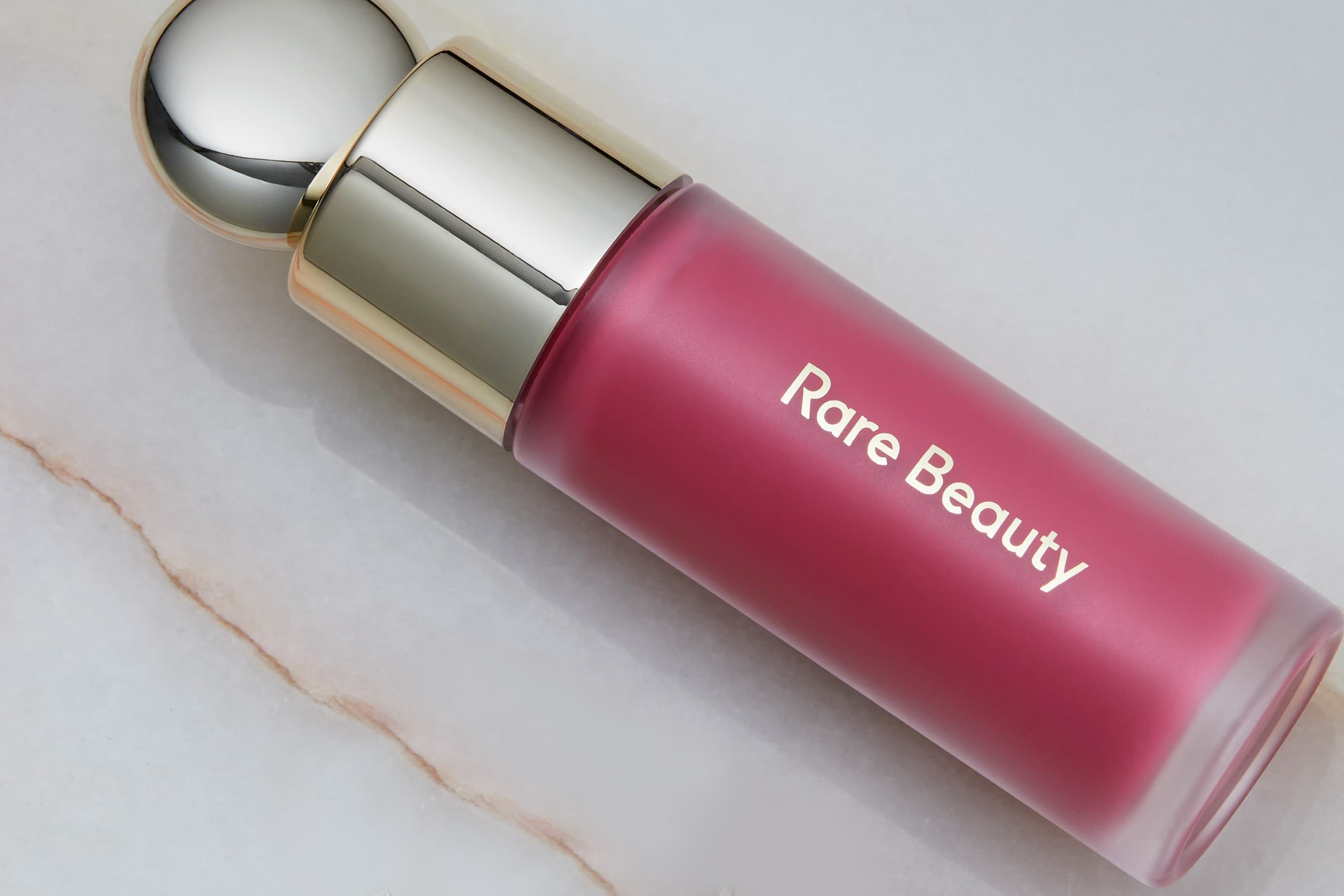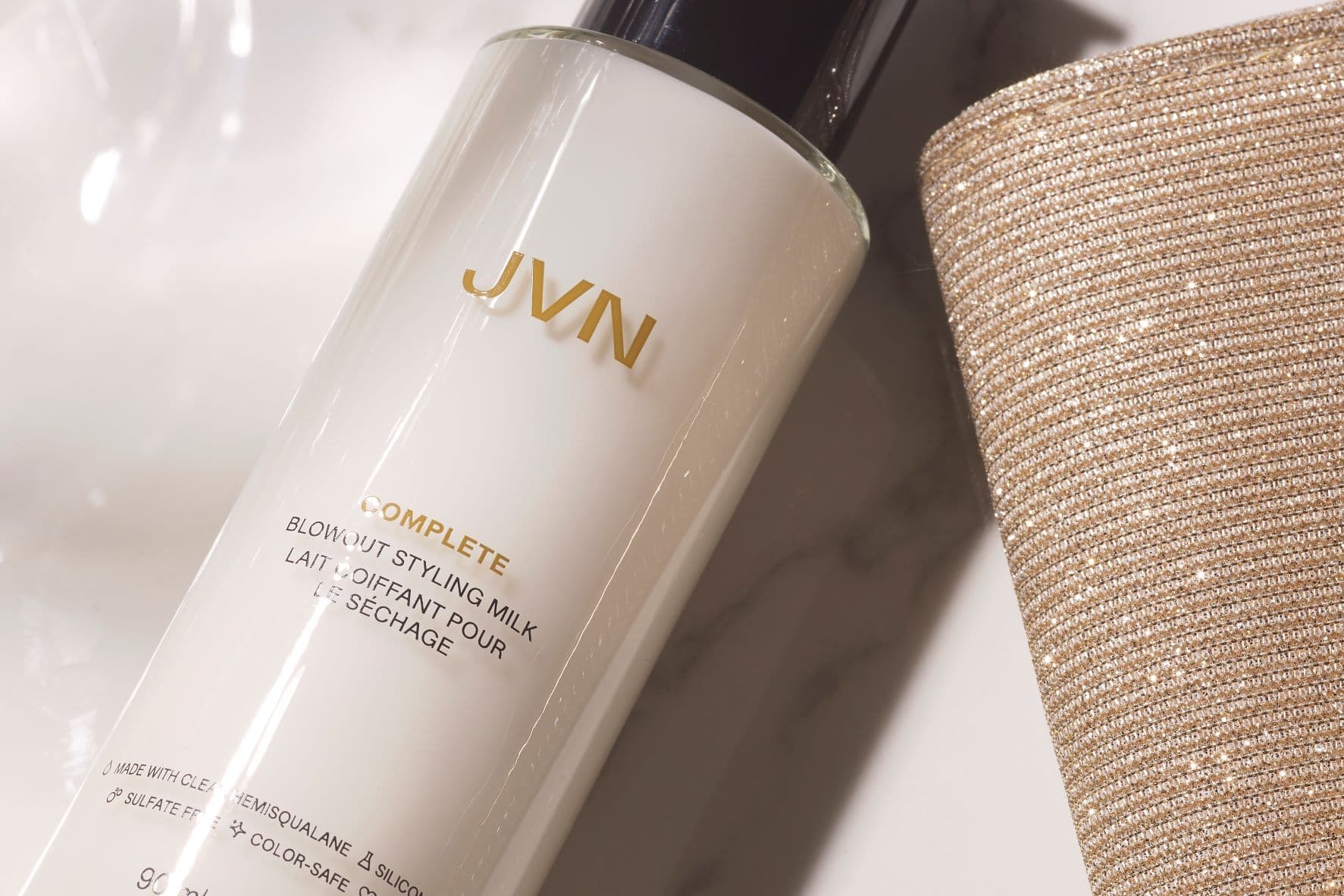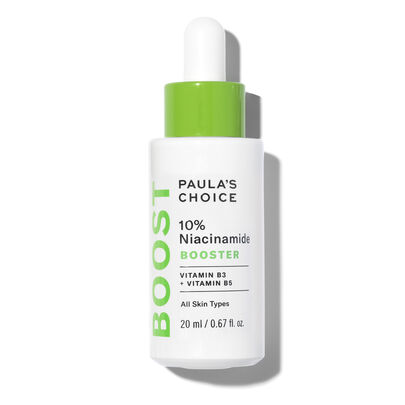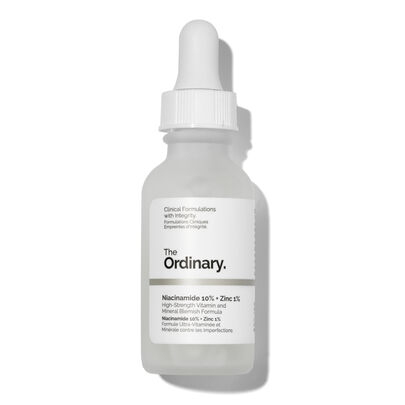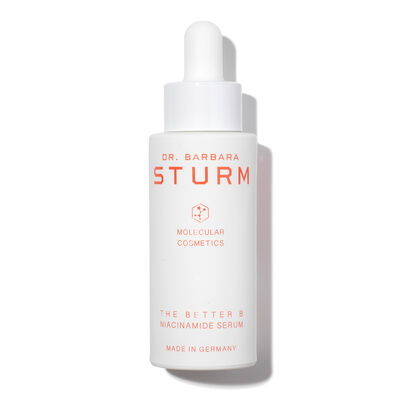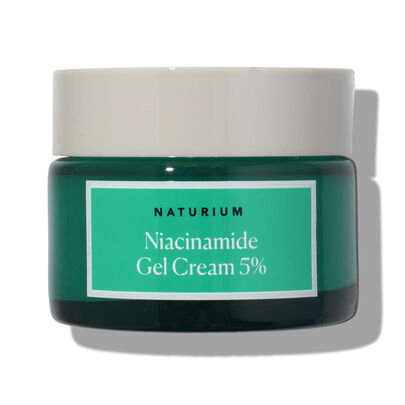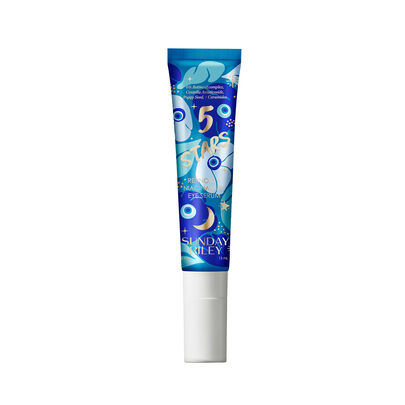Our Guide To Niacinamide Skincare
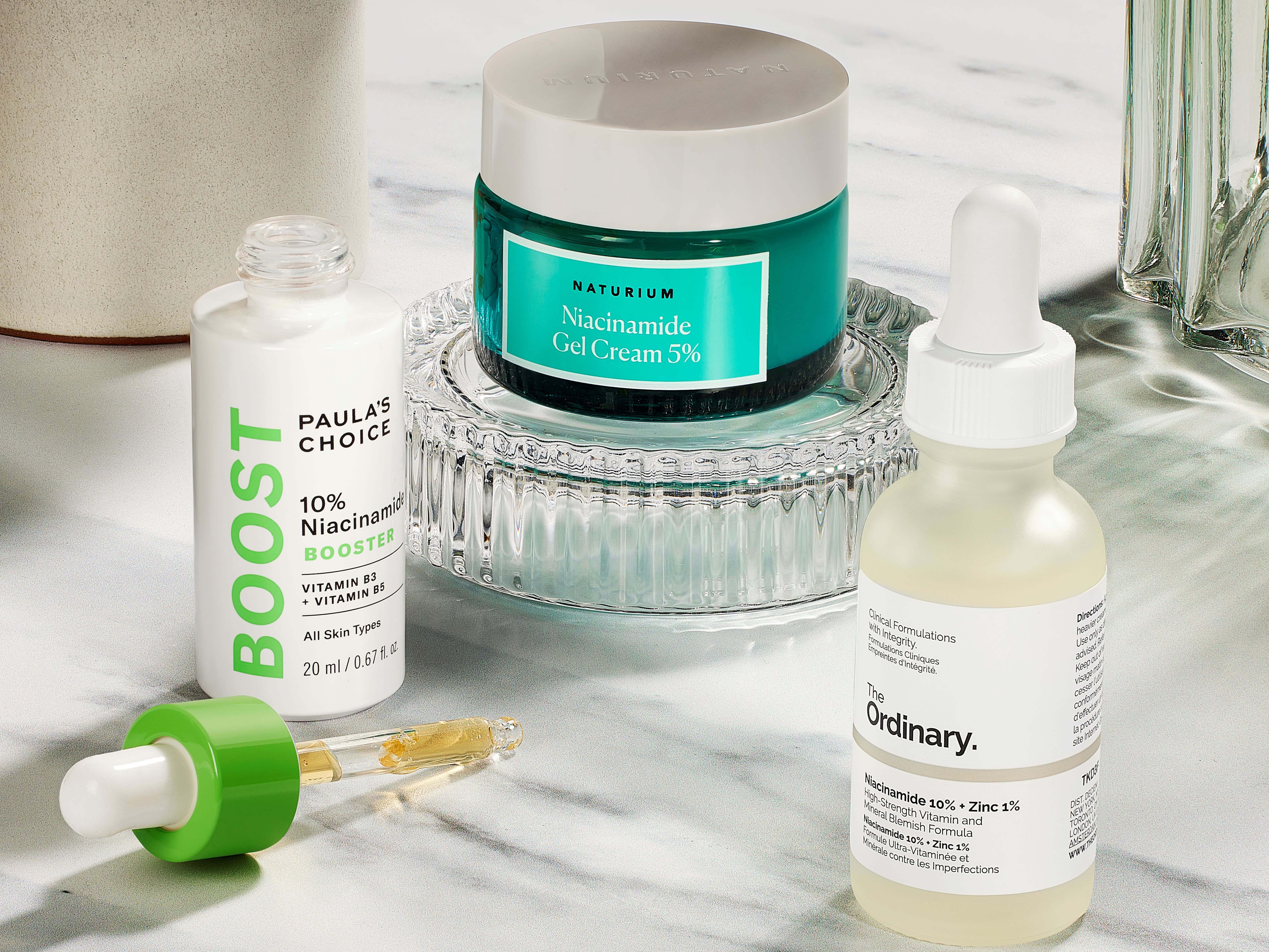
The reason that niacinamide is blowing up on TikTok and Instagram, as well as reigning supreme in the eyes of derms, facialists and beauty editors? The latest research confirms that this powerful antioxidant has a stellar ability to stimulate skin cell generation. Niacinamide is a brilliant "cell communicator", which means that it can chemically speak to lots of different of skin cells, so that they know to make more new, healthy cells. Essentially, it's a radiant-reviving, wrinkle-wrestling hero that can treat a myriad of concerns from dullness to acne.
Hesitant to add yet another ingredient into your beauty arsenal? Here’s everything you need to know about how this essential skin nutrient can help your skin rediscover its mojo. Plus, the skin types it serves best and the other ingredients it can be paired with, consider this your niacinamide 101.
What does niacinamide do?
Part of the vitamin B3 family, when applied topically niacinamide works brilliantly for helping to achieve a clear and bright complexion because of its knack for skin cell repair and fighting oxidative stress from environmental factors. In the short term its able to help fight spots and rev up your glow while in the long run it can fade pigmentation and repair barrier function.
Wondering what is niacinamide good for specifically? Here’s the low down on the top six niacinamide benefits:
Skin barrier function
Niacinamide works by increasing the production of ceramides. For those not au fait, these are lipids that form over 50% of your skin’s make-up and are present in the top layers of your skin, helping to form the natural skin barrier. When the skin barrier is functioning optimally, it is able retain moisture and repel irritants and pollution.Skin texture enhancement
Niacinamide is able to extract dirt and oil from pores and mop up sebum helping to minimise the appearance of pores and improve overall skin texture.Spot fighting
Thanks to ability to quell inflammation, niacinamide is also thought to help clear up cases of mild acne.Dark spot improvement
Several studies show that niacinamide can lessen the appearance of hyperpigmentation in both Asian and Caucasian skin. It does this by stimulating collagen production and inhibiting pigment production.Environmental defence
Niacinamide has been shown to reduce redness caused by UV rays thanks to its - it is anti-inflammatory properties.Lessen fine lines and wrinkles
Research has also found that niacinamide plays a role in reducing fine lines and wrinkles caused by sun damage.What skin type is niacinamide good for?
Because niacinamide has a plethora of benefits, it’s useful for many skin types. It’s also an ingredient that is well-tolerated causing minimal skin irritation.
Mature skin: Because of its anti-inflammatory benefits, it helps to ward off oxidative stress that can age skin cells faster. Niacinamide also helps to boost keratin production, which is a type of protein that gives your skin bounce.
Oily skin: Want to know - is niacinamide good for oily skin? Absolutely. It regulates and stabilises the production of oil in the skin. It also helps to refine pores.
Dry skin: It works for oily skin, but is niacinamide good for dry skin? It’s another resounding yes because it stops trans epidermal water loss by reinforcing the skin barrier, so that moisture can’t escape.
Sensitive skin: If you’re grappling with skin sensitivities such as rosacea and other inflammatory conditions, niacinamide is very gentle yet effective and boasts soothing qualities that pacify irritation and diminish inflammation. Experts agree it can help to alleviate skin redness associated with eczema.
How to use niacinamide?
Adding another ingredient into your skincare routine can feel daunting so it’s good to find out how to harness this savvy vitamin. Niacinamide is generally found in serums, and these are best applied after cleansing and before your moisturiser. Remember your SPF always goes on last, no matter how many products you use beforehand.
As for percentages, formulations can vary but research shows that 5% niacinamide is strong enough to brighten your complexion and reduce the flow of oil whilst still being kind to sensitive skin. Consistency is key when using niacinamide and its best to incorporate it into your routine daily for best results. Over time, you should start to see improvements in your skin's texture, brightness, and overall appearance.
The caveat? Everyone's skin is different, so it's vital to listen to your skin's needs and adjust your routine accordingly. If you experience any irritation or discomfort, reduce the frequency of use, or discontinue use altogether. Consulting with a dermatologist can also provide personalised guidance based on your specific skin concerns.
How often should you use niacinamide?
The good news is that unlike some acids and retinol, which heighten sun sensitivity, niacinamide poses no such risk, making it a safe option for daily use. Its soothing and antioxidant properties make it a winner for everyday application, too.
As for when to use niacinamide in skincare routine? Slotting it into your morning routine is a good shout because its antioxidant properties make it a valuable shield against UV damage and pollution. Think of it as a brilliant bolt on to your SPF.
There’s more. Niacinamide's anti-inflammatory properties make it equally beneficial for night-time application. Whether used alone or alongside hydrating ingredients, it serves to fortify and soothe the skin, promoting overall resilience and balance to your skin barrier.
How long does niacinamide take to work?
This will vary from person to person and will depend on factors such as skin type, individual skin concerns, and the specific formulation and concentration of niacinamide used. However, most people begin to see improvements in their skin within a few weeks of consistent use. For noticeable skin improvements, daily use of niacinamide for four to six weeks is recommended. This allows it to regulate sebum, hydrate skin, and address concerns like hyperpigmentation and fine lines.
Can you use niacinamide with other ingredients?
Like love, skincare is about chemistry, meaning that not all ingredients would get a match on Hinge. Overall though, niacinamide is a team player and can be paired with lots of ingredients that are already in your routine.
Key considerations for what not to mix with niacinamide
Glycolic acid and niacinamide don’t make the best of bedfellows. The reason is all to do with pH levels. Glycolic acid typically falls within a pH range of 3.0 to 4.0, while niacinamide boasts a higher pH of around 6.0. Combining the two can elevate the pH of glycolic acid, compromising its acidic properties and it’s also thought that concurrent use of these ingredients may provoke skin irritation. The good news is that some brands have created products that pair the ingredients together and these are fine to use because they have been expertly formulated.
If you’ve been googling ‘can you use niacinamide with vitamin C?’ then you’ll see that the jury is still out. It’s thought that niacinamide inactivates L-ascorbic acid (vitamin C) – but only if it is in a combined water-based product. This means you can still use niacinamide and vitamin c, but they should be in different products and preferably not used one after the other, just to be on the safe side.
Key considerations for what to use with niacinamide
It works well alongside a retinol for example, as it infuses extra antioxidant benefits to the skin. Niacinamide is also calming and skin barrier strengthening so can help to reduce sensitivity, making it the perfect partner for retinol which can often be too irritating for some.
Can I use niacinamide with hyaluronic acid? The answer to that question is that these two are match made in skin heaven. When used together, niacinamide and hyaluronic acid can provide 360 approach to skincare, addressing both hydration and various skin concerns. You can layer them by applying niacinamide serum first, allowing it to absorb into the skin, and then following up with hyaluronic acid moisturiser to lock in hydration.
If oiliness is a bugbear you’re trying to combat, niacinamide can paired with salicylic acid and is often found in clarifying products.
Understanding the potential side effects of niacinamide
Dr Paris Acharya from Get Harley explains that niacinamide is suitable for most skin types. “Used topically, niacinamide is extremely safe. The only noted side effects of topical niacinamide are mild itching, redness and burning. However, these are rare and often go away over time as your skin becomes more accustomed to the substance,” she explains.
The Best Niacinamide Skincare
Here are some of our favourite serums and creams that utilise the benefits of niacinamide:
Niacinamide alternatives
Because niacinamide is the ultimate multi-tasker there aren’t any ingredients that are considered like for like. However, if you’re looking for a natural equivalent then there are skincare bands (such as Kora Organics) who opt for rosehip oil as a replacement for niacinamide. Rosehip oil is thought to mimics the benefits that niacinamide gives and it is also abundant in antioxidants, essential fatty acids, and has anti-inflammatory properties, too.
Our takeaway on niacinamide for skin
If you want to know whether niacinamide is worth the hype, then just like any skincare ingredient, it depends on the issue you’re trying to treat. If you’re looking to fade stubborn dark spots, dial up your glow and improve overall skin health then niacinamide is your best bet. If ironing out lines and wrinkles is the aim of your game, then you’re better off opting for retinol. Ultimately though, the reason niacinamide is earning its place in the skincare hall of fame is because it’s the difference between good skin and great skin, and who doesn’t want that?
Read More
• The Best Hyaluronic Acid Serums for Plump, Hydrated Skin• The Best Retinol Serums and Creams for Every Budget • The Best Face Mists for Hydrated, Glowing Skin
• How do Lip Plumpers Work? • Everything You Need To Know About Skin Cycling


